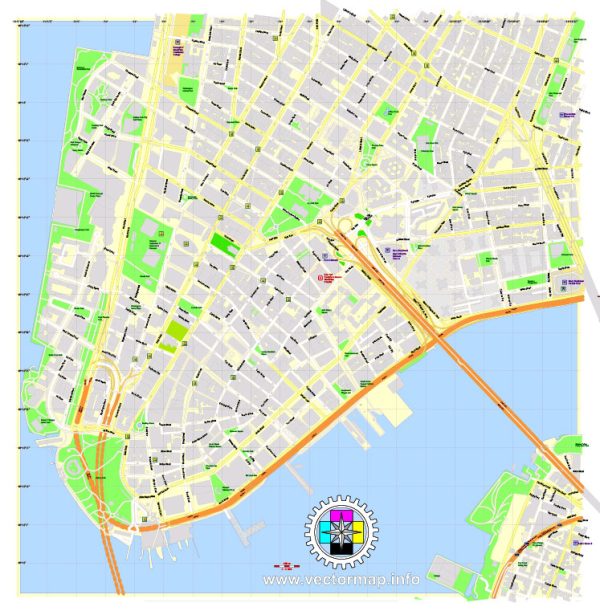The Financial District in New York City has a rich history of urban development that spans centuries. Here’s an overview of its evolution:
- Colonial Era (17th Century): The area that would later become the Financial District was one of the earliest settled parts of Manhattan. Dutch colonists established New Amsterdam in the early 17th century, and the southern tip of Manhattan became a hub for trade and commerce.
- New Amsterdam and British New York (17th-18th Centuries): The British took control of the Dutch colony in 1664, renaming it New York. The city continued to grow as a commercial center, with the southern tip serving as a vital port for shipping and trade.
- Revolutionary War and Early Republic (18th-19th Centuries): During the Revolutionary War, the area played a significant role. After the war, the city became the first capital of the United States from 1785 to 1790. However, the capital was later moved to Philadelphia, and the financial center of the city began to shift towards the southern tip.
- 19th Century Growth and Skyscrapers: The 19th century saw significant population growth and economic expansion in New York City. The Financial District continued to develop, and by the late 19th century, it became home to some of the earliest skyscrapers in the world. The Equitable Life Building (1870) and the Trinity Building (1905) are notable examples.
- Wall Street and Stock Exchange (Late 19th Century): Wall Street became synonymous with finance in the late 19th century. The New York Stock Exchange (NYSE) was founded in 1792 under a buttonwood tree on Wall Street. Over the years, it grew in prominence, and the Financial District solidified its status as the financial hub of the United States.
- 20th Century Changes and World Trade Center: The 20th century brought more changes to the Financial District. The construction of the World Trade Center towers in the 1970s was a major development. The complex became an iconic symbol of the district until the tragic events of September 11, 2001.
- Post-9/11 Rebuilding: The terrorist attacks on September 11, 2001, had a profound impact on the Financial District. The destruction of the World Trade Center led to extensive rebuilding efforts. The new One World Trade Center, also known as the Freedom Tower, was completed in 2014, symbolizing resilience and recovery.
- Contemporary Financial District: Today, the Financial District is a dynamic and bustling neighborhood. It’s home to numerous financial institutions, corporate offices, and historic landmarks such as Trinity Church and Federal Hall. The district has also seen an influx of residential development, transforming it into a more balanced live-work community.
The history of the Financial District reflects the broader evolution of New York City, from its early days as a colonial outpost to its present status as a global financial powerhouse. The district’s architectural landscape, economic importance, and cultural significance continue to make it a key area in the city’s ongoing development.


 Author: Kirill Shrayber, Ph.D.
Author: Kirill Shrayber, Ph.D.